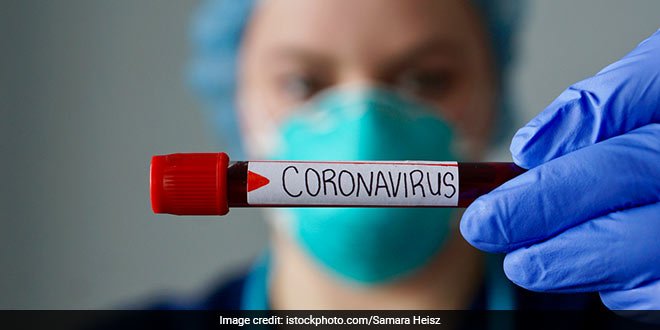New Delhi: India today (April 23) logged over 3.32 lakh new Covid cases, once again the highest-ever daily count recorded in the world, and 2,263 deaths since yesterday, as per the data by Union Health Ministry. Hospitals across the country are reeling under a severe shortage of medical grade oxygen for COVID patients caught in the deadly sweep of the second wave of infections. The alarming surge has led the central government to release a set of instructions that says that COVID-19 patients who are being treated at home can practise proning if they are having breathing discomfort. The Union health ministry released a detailed document explaining what proning is and how it helps in improving oxygenation.
Also Read: Four Steps To Fight COVID Effectively Explained By AIIMS Chief Dr Randeep Guleria
What Is Proning?
Proning is basically a medically accepted position to improve breathing comfort and oxygenation. The health ministry says, “Proning is the process of turning a patient with precise, safe motions, from their back onto their abdomen (stomach), so the individual is lying face down.”
The document also says that COVID patients with compromised breathing comfort in home isolation will find this extremely beneficial. It also added that it is required only when the oxygen level falls below 94 per cent.
Healthy Ministry instructions also noted that regular monitoring of oxygen levels, along with other signs like temperature, blood sugar is important during home isolation and added, “Timely proning and maintaining ventilation could save many lives..”
Proning as an aid to help you breathe better during #COVID19 pic.twitter.com/FCr59v1AST
— Ministry of Health (@MoHFW_INDIA) April 22, 2021
Things You Need For Proning
Sharing a detailed graphics of explaining the process of Proning, the health ministry said that one needs about four to five pillows for proning. It further said that one pillow has to be placed below the neck, while one or two can be placed below the chest through upper thighs and two pillows can be placed below the shins. The patient needs to change the lying position every 30 minutes from lying on the belly to lie on each side and then sitting up before going back to the first position of lying face down.
Here’s a chart for your reference:
Also Read: COVID-19 Explained: Triple Mutation In India
Things To Keep In Mind
The ministry also listed a word of caution and recommended the following steps in the process of proning:
1. Proning should be avoided for an hour after meals
2. Maintain proning for only as much times as easily tolerable
3. One may prone for up to 16 hours a day, in multiple cycles, as felt comfortable
4. Pillows may be adjusted slightly to alter pressure areas and for comfort
5. Keep a track of any pressure sores or injuries
When Not To Do Proning
The ministry has listed four conditions when proning should be avoided:
1. Pregnancy
2. Deep venous thrombosis (treated in less than 48 hours)
3. Major cardiac conditions
4. Unstable spine, femur or pelvic fractures
NDTV – Dettol Banega Swasth India campaign is an extension of the five-year-old Banega Swachh India initiative helmed by Campaign Ambassador Amitabh Bachchan. It aims to spread awareness about critical health issues facing the country. In wake of the current COVID-19 pandemic, the need for WASH (Water, Sanitation and Hygiene) is reaffirmed as handwashing is one of the ways to prevent Coronavirus infection and other diseases. The campaign highlights the importance of nutrition and healthcare for women and children to prevent maternal and child mortality, fight malnutrition, stunting, wasting, anaemia and disease prevention through vaccines. Importance of programmes like Public Distribution System (PDS), Mid-day Meal Scheme, POSHAN Abhiyan and the role of Aganwadis and ASHA workers are also covered. Only a Swachh or clean India where toilets are used and open defecation free (ODF) status achieved as part of the Swachh Bharat Abhiyan launched by Prime Minister Narendra Modi in 2014, can eradicate diseases like diahorrea and become a Swasth or healthy India. The campaign will continue to cover issues like air pollution, waste management, plastic ban, manual scavenging and sanitation workers and menstrual hygiene.
[corona_data_new]






























